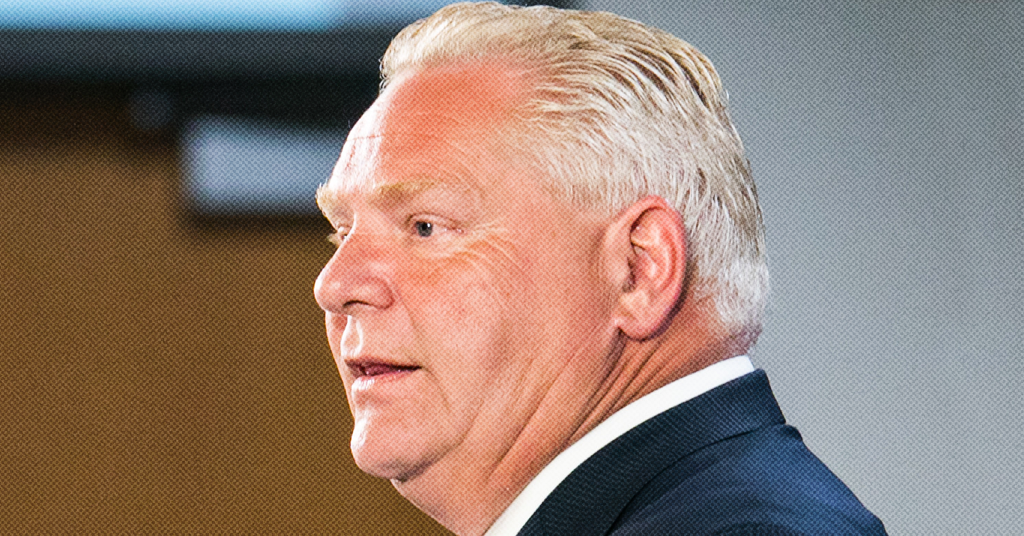
Toronto’s Experiment With Online Learning Created Problems for Students. But Doug Ford Thinks It’s a Brilliant Idea.
Academic experts say the Toronto District School Board's experience with eLearning revealed big problems for students
While Doug Ford’s government pushes ahead with its plan to eliminate teacher jobs and make online learning mandatory in Ontario schools, an academic study shows students have trouble learning using Toronto’s existing online learning courses.
A recent dissertation conducted by a University of Toronto PhD candidate examined 33 eLearning courses offered by the Toronto District School Board in 2016-17 and found evidence the online learning courses are not very user-friendly for students.
According to the study, the eLearning courses did not adequately engage students, with some students having trouble staying focused while others found their learning was frustrated by the shoddy design of the software.
For example, the study found communications with teachers over the eLearning platform was often due to software that was too “text-heavy” and created barriers to “collaboration” and learning:
“Communication was text-heavy and presided over by the teacher. The lack of collaboration is due to a limitation of tools, where even synchronous classes, which are teacher-controlled, reflect poor attendance because students are not compelled to attend.”
Study author Beyhan Farhadi, a researcher in online learning, told PressProgress that the TDSB’s experience with eLearning shows that shifting away from human interactions to virtual classrooms, as the Ford government would like to do, comes with major trade-offs for educational outcomes.
“It’s not a replacement for face to face instruction,” Farhadi said.
“These are adolescents developing executive functioning. Neuroscience would say this is a bad idea, especially with the issues surrounding excessive screen time,” she added.
Farhadi’s study also notes many students had trouble staying focused on their work, something that is made more difficult in an online learning environment where teachers can’t “nudge them when they’re distracted.”
University of Regina professor Alec Couros told PressProgress that while digital tools can provide new opportunities to connect and learn, these “tools alone do not solve the problem of student engagement.”
“This is where sound pedagogy and attention to authentic student socialization and collaboration matters.”
I had the opportunity to present online learning models to #onted & automated teaching was certainly something presented as out of the question. #OnlineLearning requires expert facilitation to be of any quality, especially for K12 settings. https://t.co/oXxvLEWXWn #edtech #edchat
— Dr. Alec Couros (@courosa) January 15, 2020
Another recent study by the Ontario Student Trustees Association found one in four students polled reported challenges communicating with their e-learning teachers. Nearly another 60% said their learning style was not supported by the delivery method.
Asked if similar outcomes can be expected, should the government succeed in making online learning mandatory, Farhadi said “I can’t imagine it otherwise.”
“These findings would likely extend to the whole of Ontario if the same types of eLearning methods are employed,” Couros added.
Back in 2014, the ministry of education reported consultation participants rejected mandatory elearning.
The ministry report said: “Some students who had completed distance education or on-line courses and teacher-mediated e-learning courses found them challenging.” It added that “a number felt online or e-learning courses or methods of delivery were not appropriate to address the e-learning needs of every student.”
The ministry of education’s current $84.2 million contract with Brightspace — described by Farhadi as the company “which currently provides access to the LMS used for the provision of e-learning provincially,” — is set to end March 31, 2022.
Secret documents obtained by the Toronto Star found the government planning to “progressively increase” elearning requirements while raising in-person class sizes and shaving education expenditure. It expected $56.7 million in cuts in 2022, followed by $57.4 million annual cuts from 2023-24 on.
Randy LaBonte, CEO of CANeLearn, told PressProgress that”For elearning to be successful, I don’t see how the number of educators could be decreased.”
“It’s just that the roles would be shifted — you would still have the same number of educators in the school.”
The Canadian Centre For Policy Alternatives estimates the government’s increases in class sizes and planned online learning roll-out could eliminate 6,000 teaching positions from Ontario’s schools.
Researcher Ricardo Tranjan told PressProgress “both mine and FAO’s estimates combine e-learning and class-size changes.”
Our journalism is powered by readers like you.
We’re an award-winning non-profit news organization that covers topics like social and economic inequality, big business and labour, and right-wing extremism.
Help us build so we can bring to light stories that don’t get the attention they deserve from Canada’s big corporate media outlets.
Donate



